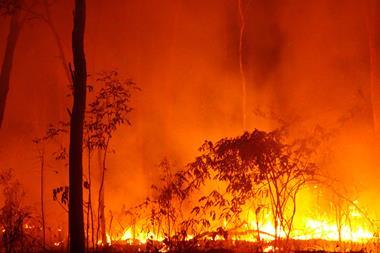Some firms are poorly equipped to mitigate the risks posed to business assets and personnel, warns Healix
Travel risk management provider Healix International is calling on businesses to address their operational risks in light of its annual Risk Outlook for 2023.
Chris Job, director of Risk Management Services at Healix International, comments: “Business leaders will be well aware of the various disasters and emergencies playing out on the global stage, yet some are inadequately equipped to mitigate the risks they pose to business assets and personnel.
”Having a sense of the main risks faced by their company cannot alleviate the threat itself, but it can provide business leaders with the ability to proactively implement the necessary measures to enhance their current security procedures.
Security and risk managers should continuously re-evaluate these threats and regularly conduct thorough risk assessments to determine where their key vulnerabilities lie.”
The report revealed the top five risks to businesses and suitable measures for mitigation:
- Energy crisis
Putin continues to weaponise the Nord Stream pipeline and gas exports from Russia have already dropped by nearly a third (30%) since the start of the invasion of Ukraine. This is causing an acute energy supply emergency that may see countries forced to adopt more drastic measures such as rationing to avoid blackouts.
While most European countries have introduced fiscal policies, such as an energy price cap, to shield consumers from energy market volatilities, companies remain exposed to the financial risks resulting from the energy crisis.
Businesses will have to manage various challenges stemming from soaring operational costs and market fluctuations throughout 2023.
- Deepening political polarisation
Political polarisation featured in numerous elections during 2022, impacting previously more neutral systems such as Sweden where the right-wing democrats secured a majority in September.
Likewise, in Italy, right-wing Georgia Meloni succeeded in becoming the first woman to win the Italian premiership through an election campaign premised on nationalism and anti-EU rhetoric.
This trend looks set to continue into 2023 with elections in Columbia and Brazil going in the same direction. Businesses who regularly deploy personnel abroad will find that previously benign areas are now mired in political and social unrest. As such, companies will have to tackle extra security and operational risks by enhancing their existing safety measures.
- Increasing cyber risks
Data shows that we saw 15 million data breaches worldwide in the third quarter of 2022 as accelerated digitisation provided opportunities for hackers. As more network-connected personal devices come on the scene and hybrid working increases, businesses need to be aware that this has an impact on their security.
Each employee’s home devices presents an easy avenue through which attackers can breach the company’s systems and access highly-sensitive data. Companies will therefore be tasked with firming up their cyber security measures as well as cultivating employee awareness and vigilance.
- Diversification of global extremism threats
Extremism trends, particularly in the West, have become more diverse throughout 2022 with motivations deviating away from far-right and broader terrorist ideologies.
Islamophobia, anti-Semitism, anti-LGBTQ+ sentiment, white supremacism, anti-establishment thought and sexism have further broadened the kaleidoscope of extremist beliefs while more traditional insurgent group continue to be highly active.
Businesses should be vigilant about staff travel, ensuring the appropriate level of risk mitigation is in place, including things like mobile tracking, and that staff have an evacuation route if necessary.
- Climate risk
‘Once in a century’ extreme climate events are now a yearly occurrence. Extreme rainfall in Pakistan saw 1,700 fatalities and flooding of 75% of Sindh Province. Hurricane Ian caused significant infrastructure damage in Cuba and Florida and Australia’s wildfire season has increased by an average of 27 days in the last 40 years.
All of this has drastic implications for both travelling staff and operational activity across the world, necessitating businesses to put measures in place to mitigate them, especially in regional hotspots.




















No comments yet